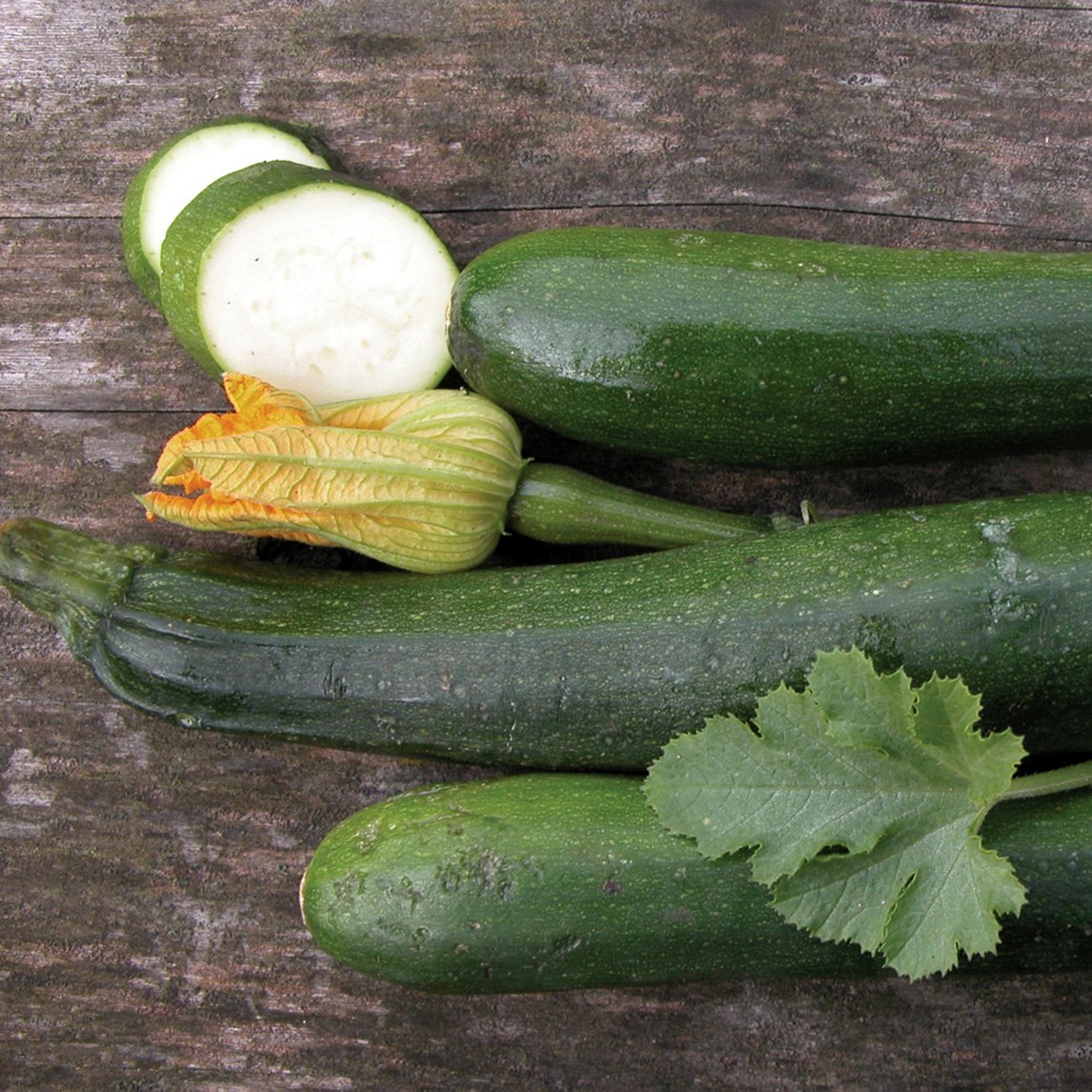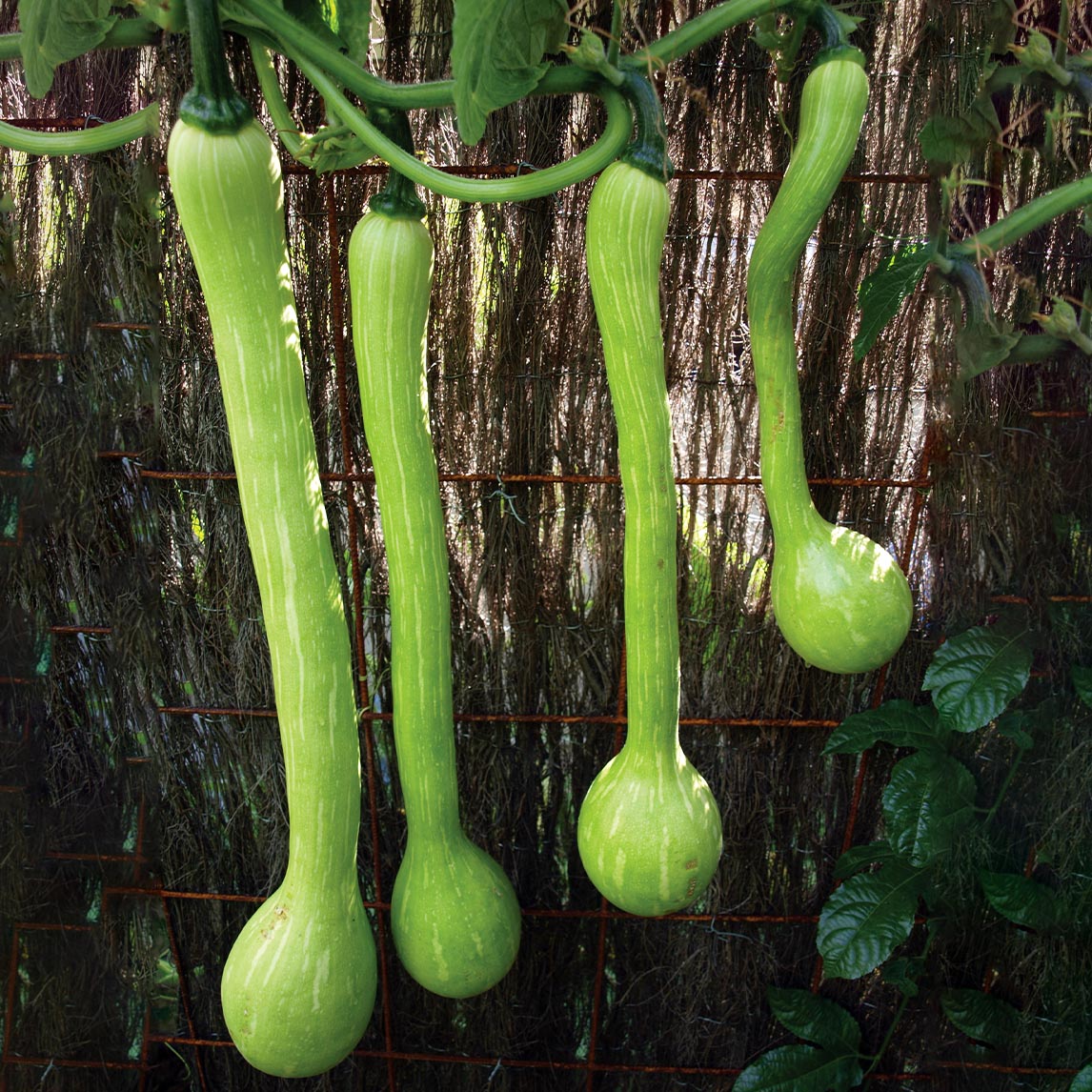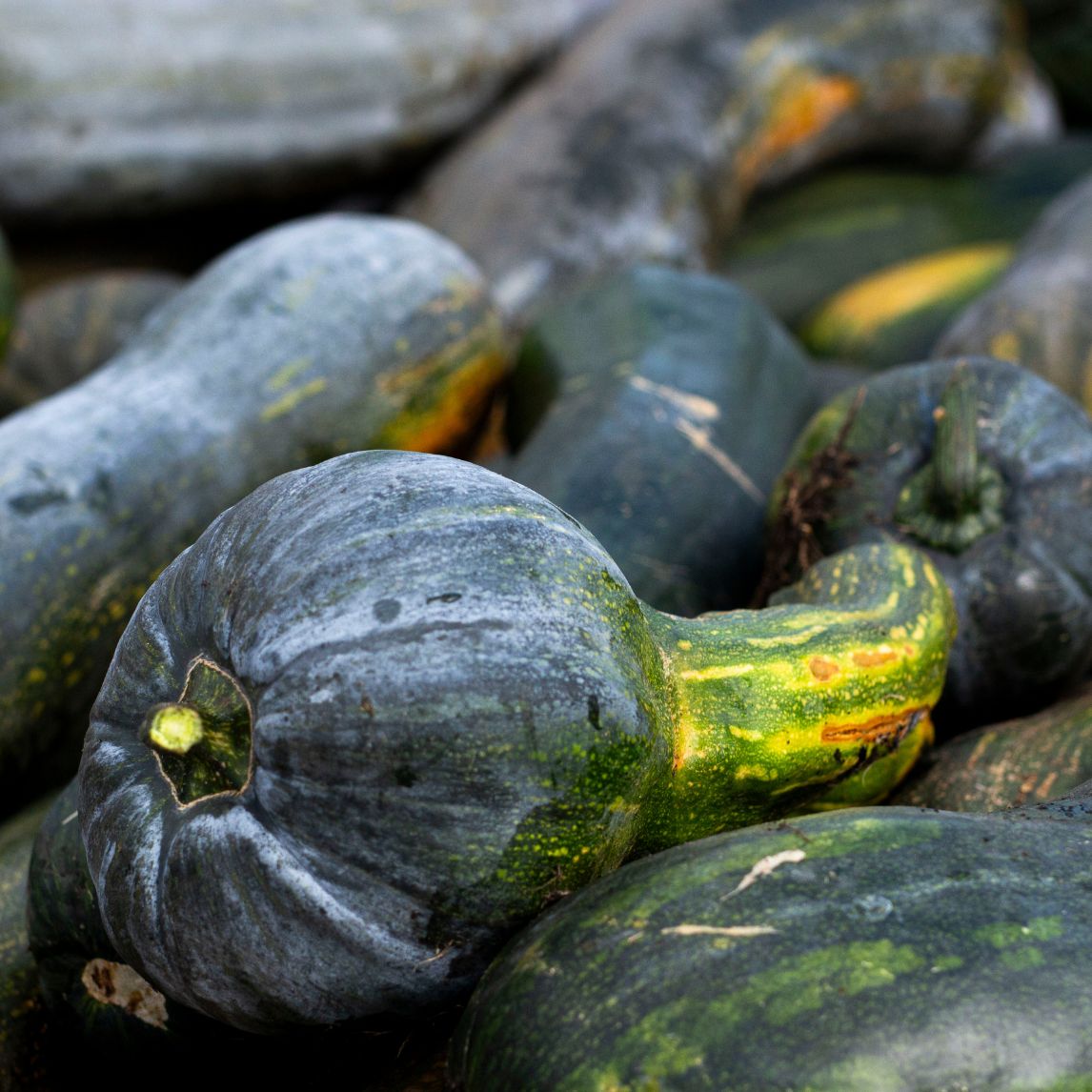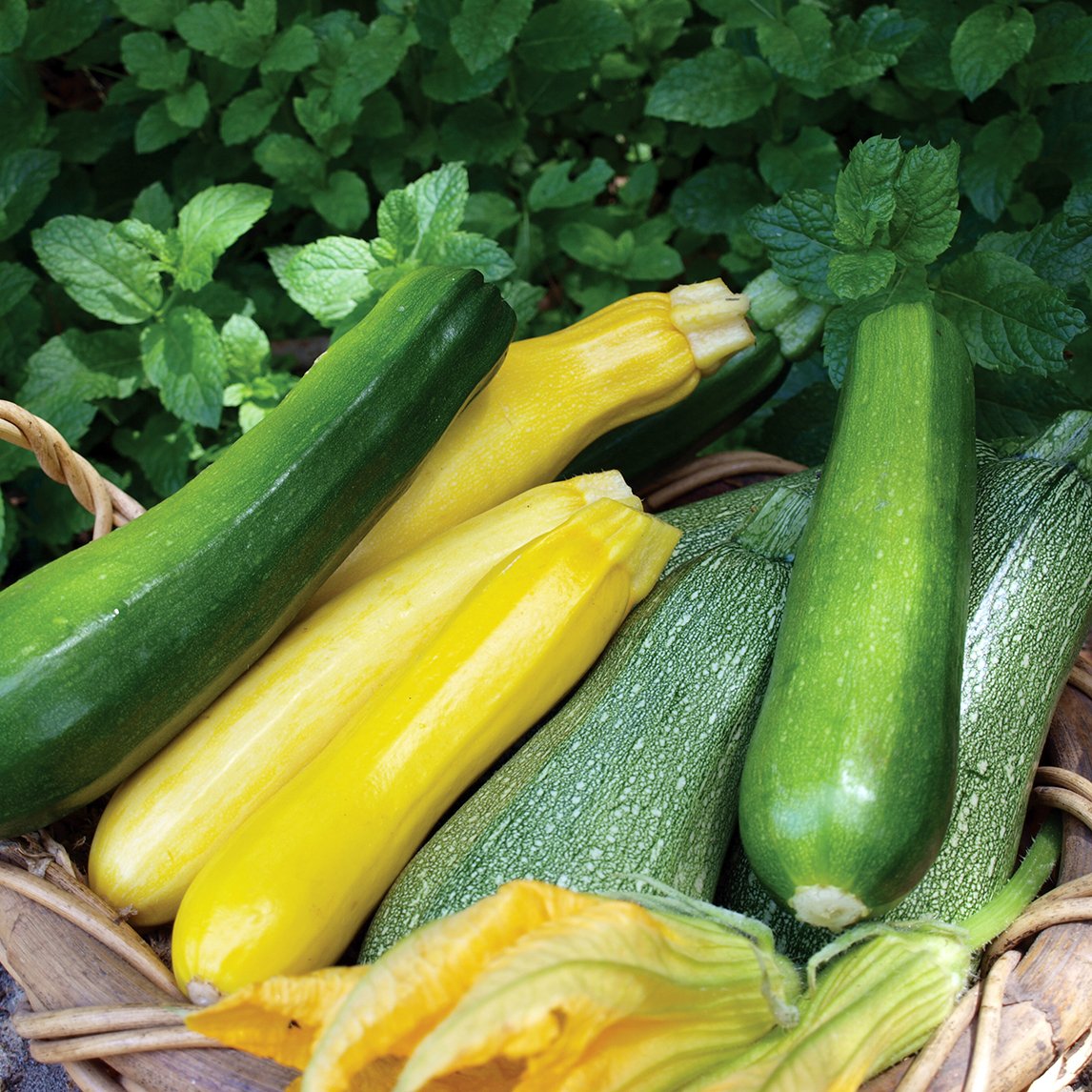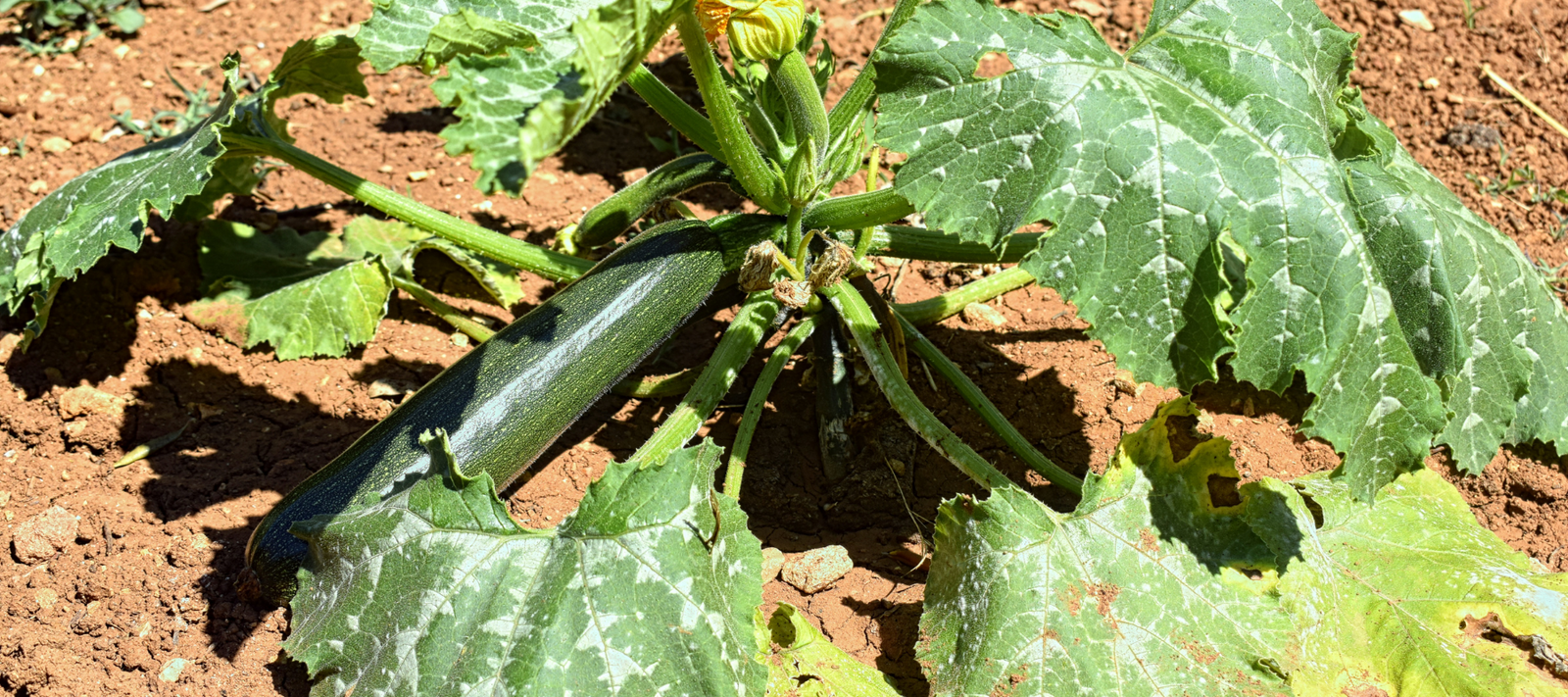
Botanical Name: Cucurbita pepo
Plant Type: Tender Annual
Quick to reach harvest and so productive, these ‘baby marrows’ are delicious when picked young, just six weeks from sowing. Incredibly prolific, zucchini plants provide an abundance of fruit and edible flowers.
In Australia, zucchini is harvested when the fruit is at an immature stage; usually from 15 cm to 30 cm long, depending upon personal preferences. If the fruit of the zucchini is allowed to reach the fully mature stage, which in some varieties can be the best part of one metre in length, it is then referred to as a marrow.
Varieties
Most of us are familiar with the traditional sausage-shaped zucchini found in supermarkets. Heirloom varieties like this are available, as are the Crookneck varieties popular overseas, primarily in the USA. Crookneck zucchini, rather than being sausage shaped, are quite bulbous on the ends, have curved necks, often yellow rather than green, and have much thicker skins than our locally known varieties. Some varieties, such as Early Summer Yellow Crookneck, have quite a spectacular appearance, being covered in warts and blisters. Do not be put off by the unusual appearance or thick skin, they are popular for a reason – primarily their exceptional flavour and sweetness; they also remain a harvestable size longer than most sausage types.
Cultivation
Easy to grow and incredibly productive, a few zucchini plants will go a long way.
Plant as you would pumpkins, in a soil enriched with compost and decomposed manure. Zucchini can be grown in flat beds, or preferably in mounds to improve drainage to reduce the likelihood of ‘Dampening Off’. Thin as required when seedling establish and begin to produce their vines. If training up a trellis, allow the vines to grow around 1m before tying to a trellis or frame. This will help to maximize your harvest I a small amount of space. It can also make it easier to spot fruit and pick at the right time, avoiding those sneaky marrows.
Sun: Full Sun
Pollination: Insect pollinated
Soil: Enrich soil prior to planting with decomposed manure and well-rotted compost. This will improve the nutrients, organic matter and water holding capacity of your soil. An application of rock dust prior to planting will also help to reintroduce many trace elements missing from modern soils.
Growing from Seed
Sow: Direct sow after frost or sow in punnets.
Ease of Germination: Easy
Germination Temperature: 21°C–35°C
Germination Time: 7-10 days
Spacing: 80cm
Harvest: 60-90 days
Yield: 6-24 fruit per plant
Sow more seed than required to ensure successful germination, but thin as the vines begin to develop to avoid overcrowding. There is usually no need to stagger your planting as plants produce such a prolific harvest within the season, especially when picked regularly.
If growing in punnets, transplant carefully after all likelihood of frost has passed. Plants will establish quickly and can be trained to a trellis or grown in pots where space is limited.
Maintenance and Additional Care
Water regularly but avoid wetting the foliage to reduce the likelihood of powdery mildew. Monthly applications of a seaweed and fish emulsion like Ocean Brew will help to keep plants healthy.
Companion Planting
Good companions: Borage, Capsicum, Chilli, Chives, Corn, Lettuce, Nasturtium, Peas, Radish, Spinach, Tansy, Tomato
Bad companions: Potato
Pests and Diseases
Members of Cucurbitaceae, zucchini are susceptible to a range of fungal diseases, especially as they mature. These include powdery mildew and downy mildew.
Downy mildew typically produces light-gold angular spots (which in the later stages are covered by a fine white powder that turns brown) on the leaves and purple spots on the undersides. Warm, humid weather, particularly extended periods of summer rain, favour outbreaks of downy mildew. Powdery mildew is readily identified by the presence of fuzzy white patches on top of the leaves, eventually spreading to kill whole leaves. Outbreaks are encouraged by warm days followed by nights of heavy dew. Rain generally inhibits outbreak of powdery mildew.
In our experience, these two diseases tend to be a problem only in the latter part of the season, and being largely environmental, are difficult to control.
Blossom end rot can also occur and, like tomatoes, is caused by calcium deficiencies in the soil, waterlogging of the soil, or irregular watering.
Container Gardening
Zucchini can be grown in pots, where their vine can either trail over the side or be trained to a trellis. Always use a premium potting mix that meets the Australian Standards (look for the tick on the bag). When grown in pots, plants will need more frequent watering, but hopefully, you’ll be able to spot those yummy fruits more easily when they are ready to harvest.
Harvesting
Pick frequently as crops start to bear fruit. Zucchini should be picked daily to maximize yield and reduce the number of fruits which become too large. If you find you have an abundance, you can also harvest the zucchini flowers and eat them either stuffed with ricotta or fried in tempura batter or panko crumbs. It’s even nice to harvest the flowers when they have tiny zucchini attached – they make a spectacular entrée.
Seed Saving
Seed Longevity: 4-6 years
Isolation Distance: 400m
How to Save Seed: To save seed, allow fruit to remain on the vine until the skin become thick, like a pumpkin. Once harvested, leave to mature for 4-6 weeks before scooping the seeds from the pulp. Wash to separate the seed and pulp and dry the seed on paper towel. As with pumpkins, viable seed will sink, while non-viable seed will float. Save only viable seed for sowing next year. Once dry, seed can be store in an envelope in a dark, dry environment.
Tips and Tricks for Success
- in cool climates, start seed in punnets ready for transplanting after the first frost. This will speed up your time to first harvest.
- inadequate pollination of zucchini flowers will cause the small, developing zucchinis to shrivel and drop from the plant. Zucchinis produce separate male and female flowers, and pollen must be transferred for pollination, and fruit set, to take place. Bees will pollinate your zucchini flowers, or you can move the pollen from the male flowers to the female with a small paint brush.



